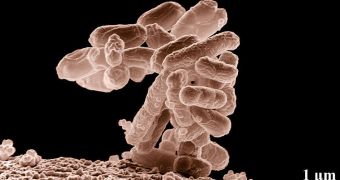Space robotics experts at the US Naval Research Laboratory (NRL) are working on a new generation of exploration rovers. They say that the machines would look entirely different from the robots we're used to seeing launch in space. For starters, they will be powered by microbes.
Scientists acknowledge the fact that future space missions will need to be able to send back vast volumes of data. Until now, that need was covered by space agencies building larger and larger spacecraft. But that path is unsustainable.
NASA already sent two Mars Exploration Rovers to the Red Planet, and then followed up 8 years later with the Mars Science Laboratory (MSL) rover Curiosity. The latter is so immense that it rivals a small SUV in size, while weighing about a ton.
In order to send even larger machines to other worlds, engineers would have to build extremely expensive rockets, and also make nuclear energy portable. Another solution, the NRL group believes, is to go small, and obtain vast volumes of data through another approach.
The team says that a swarm of robots, weighing less than one kilogram each, could fulfill the same tasks as a more complex machine, but at a fraction of the cost, with lower energy consumption, and with greater resilience.
Investigators with the NRL Spacecraft Engineering Department are working under a NASA Innovative Advanced Concepts (NIAC) research grant to develop small robots that would be able to investigate other planets, all while powered by nothing more than bacteria. Expert Gregory Scott leads the team.
Microbial fuel cells are one of the most promising avenues of research in space exploration today, because they can provide reliable energy for extended periods of time, a lot longer than even the nuclear reactor currently powering the MSL.
The actual power source would be the metabolic processes going on inside the bacteria themselves. The electrons the microorganisms generate are sent through a anode-cathode-resistor circuit, which then generates electricity, Wired reports.
Such a battery would recharge naturally, since microorganisms are capable of reproduction. This approach offers an elegant solution to long-term power storage problems currently plaguing missions destined for the far reaches of the solar system.
“As we move forward in the utilization of MFC as an energy generation method, this research begins to lay the groundwork for low powered electronics with a long-term potential for space and robotic applications,” Scott said in a recent statement.
“Microbial fuel cells coupled with extremely low-power electronics and a low energy requirement for mobility addresses gaps in power technology applicable to all robotic systems, especially planetary robotics,” he concluded.

 14 DAY TRIAL //
14 DAY TRIAL //